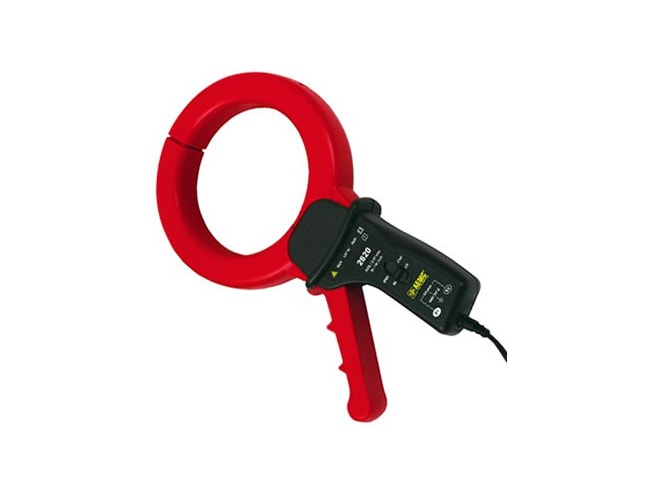
AEMC Model 2620 Leakage Current Probe
Locate and anticipate low current faults on high current loads.

Overview
Features
- High sensitivity
- Differential or leakage current from 500μA
- Current up to 400A
- Two switch-selectable measurement
- ranges: 4A AC/400A AC
- Large inside jaw diameter (>4")
- Operating temperature: -14 to 131°F (-10 to 55°C)
- single, dual, and three-phase networks
- Connect directly to DMMs on mV or VAC range
Description
The Model 2620 Leakage Current Probe measures leakage current shunted to ground caused by insulation faults. It enables the operator to locate failures when they occur, or anticipate them before they occur, without shutting down equipment or spending hours troubleshooting.
It is designed specifically for locating low current faults on high current loads. The detector is a sensitive AC current transformer capable of measuring differential or leakage current as low as 500μA, and may be used to measure current up to 400A continuous. The Model 2620 provides two output ranges: 1mV/mAac or 1mV/Aac. The output leads are terminated with standard 4mm banana plugs capable of interfacing with any standard multimeter. The use of a digital multimeter with analog bargraph is recommended; Digital to provide accurate readings, and an analog bargraph to track trends.
The Model 2620 measures leakage currents on single or multi-phase systems. Currents measured may be in or out of phase, balanced or unbalanced. When clamping around all conductors, the net magnetic field at any instant in time will be zero if all the conductors surrounded by the leakage current detector are supplying all the current delivered to and received from the load. If any current is diverted through any alternate path, such as an insulation breakdown to ground, the net loss will be detected producing an output proportional to the amplitude of the fault current.
The Model 2620 may also be used as a highly accurate clamp-on current probe. With its 4" jaw opening and range of 500μA to 200A, the Model 2620 provides a versatile way to analyze unbalanced current measurements, leakage values on grounding conductors and ground loop currents.
Applications include:
- Preventive maintenance
- Equipment troubleshooting on electrical distribution systems
- High accuracy low-current measurements
- Measure fault currents on three-phase, three-wire systems
Need Help? Call a Temperature engineer at 1-800-884-4967
We're open Mo-Th 8am to 5:30pm. Fr 8am to 5pm ET






